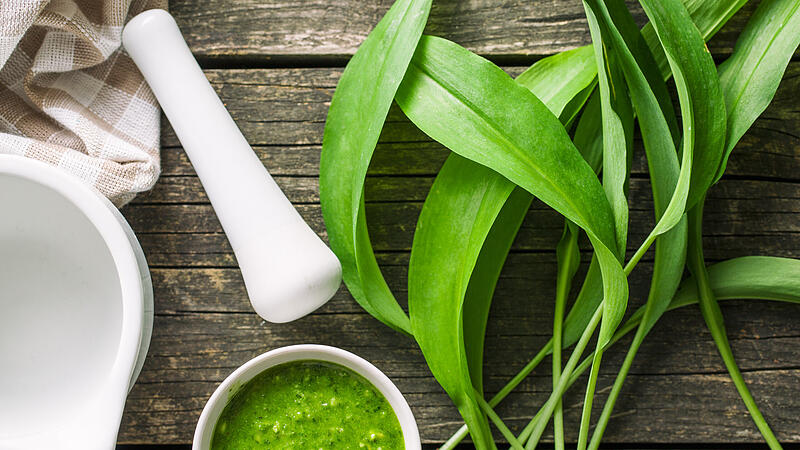Image: cbx
But the plant looks very similar to lily of the valley and autumn crocus, which can be fatal. The pungent garlic scent is unique and can be noticed from several meters away, but external appearance can be deceiving. The most important characteristic of wild garlic: Its leaves emerge individually from the ground and are clearly divided into a lancet-like leaf surface and a thin petiole. When you tear it, the juice smells strongly of garlic.
But wild garlic often appears at the same time as the deadly poisonous autumn crocus (Colchicum autumnale). Their leaves are narrow, elongated, sit on the stem without a stalk and emerge from the ground in clumps. The younger shoots are embraced by the older shoots. The sap of the autumn crocus is odorless. If you have already collected wild garlic before, the juice sticking to your hands can give off a garlic scent when you check it.
- Also read: OÖN Women’s Day: Easily make your own butter
Autumn Crocus: Three to four leaves can be fatal
Just three to four leaves of the autumn crocus can be fatal. The cell poison contained in the plant – colchicine – only takes effect after several hours. The first symptoms of poisoning occur in the form of nausea and vomiting. This is followed by diarrhea and intestinal, blood and bone marrow cells are destroyed, which can lead to death after about two days.
This vote is disabled
Please activate the category Targeting cookies in your cookie settings to display this item. My cookie settings
Confusion with lily of the valley (Convallaria majalis) usually does not have such serious consequences: glycosides, which can cause cardiac arrhythmias, are toxic to humans. However, these are poorly absorbed by the intestine and quickly excreted by the kidneys. Life-threatening poisonings are rare. The plant usually grows in pairs, with older leaves embracing the younger leaves.
The leaves of the poisonous garden tulip (Tulipa hybrids), which occasionally goes wild, can also cause a fatal mix-up. When the flowering plant does not bloom, it only produces a single leaf that resembles wild garlic. It contains tulipine, which has a similar effect to the colchicine of the autumn crocus. Nausea, vomiting, abdominal pain and diarrhea can occur as early as 15 minutes after consumption. Severe poisoning ultimately leads to shock, apathy and, in the worst case, death due to respiratory failure.
- From the archive: Wild garlic makes us fit for spring
Wild garlic likes it shady and rich in humus
Wild garlic grows in shady, humus-rich floodplains and river forests with particularly many nutrients. In the Alps, the 15 to 30 centimeter long leaves and stems can be found at altitudes of up to 1,700 meters. Only young leaves before flowering are used in cooking. Since “wild garlic” only grows locally in large quantities, only one or two leaves should be plucked off and the bulb should remain buried.
The garlic-like taste of wild garlic is milder than garden garlic and, when consumed in moderate quantities, does not cause an unpleasant smell. It is best to use fresh leaves for seasoning. Wild garlic should generally not be cooked, but should be mixed raw into hot dishes – such as soups, sauces and vegetables – or used as a salad. The plant is not only healthy for humans: bears are also said to seek the herb after hibernation to cleanse their stomach, intestines and blood.
My themes
For your saved topics were
new articles found.

info By clicking on the icon you can add the keyword to your topics.
info
By clicking on the icon you open your “my topics” page. They have of 15 keywords saved and would have to remove keywords.
info By clicking on the icon you can remove the keyword from your topics.
Add the topic to your topics.
Source: Nachrichten




